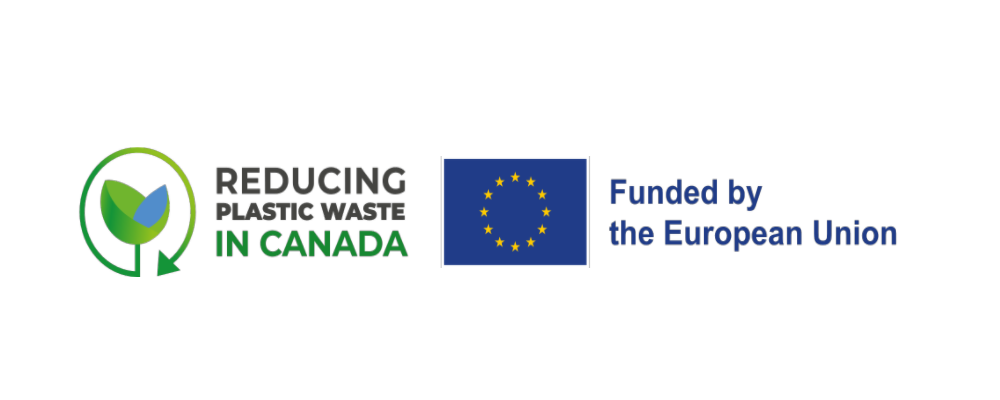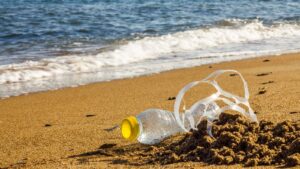Story 2: Six Key Elements of an Effective Campaign
A 2021 report from the Stockholm Environmental Institute conducted for the United Nations Environment Programme (UNEP) presented an insightful analysis of campaigns from across the world that address plastic waste. EU campaigns were found to include many of these elements.
The Reducing Plastic Pollution: Campaigns that Work study identifies how plastic campaigns can make use of effective behaviour change strategies to influence individuals’ sustainable use of plastic. The study analyzed fifty campaigns across the world and provides valuable recommendations and insights on universal norms and values that can help in the design of campaigns to effectively increase awareness and information but also motivate changes and instill new behaviors. The campaigns reviewed cover different facets of the plastic life cycle, with an emphasis on campaigns delivered since 2017. Their effectiveness in motivating individuals towards sustainable plastic consumption patterns and circularity was analysed through the lens of behavioural science. Findings show that campaigns can be successful in changing consumer behaviour by: employing good practices like providing tips and solutions to avoid plastics in everyday life; customizing messages considering age, or gender; creating incentives; and aligning with moral and social norms.
Six key elements evident in the most successful campaigns include:
|
The European Commission’s campaign, “Single-use plastics: are you #ReadyToChange?” was found to include four of these six elements. The approach was customized to target various audiences, focussed on good social norms to shape behaviour, direction provided for individuals to take specific action with visual cues, and commitments were catalyzing with a challenge feature.
An explanation of what each of these six elements should entail to design an effective campaign strategy, as well as what to avoid in designing campaigns is presented in the following infographic.
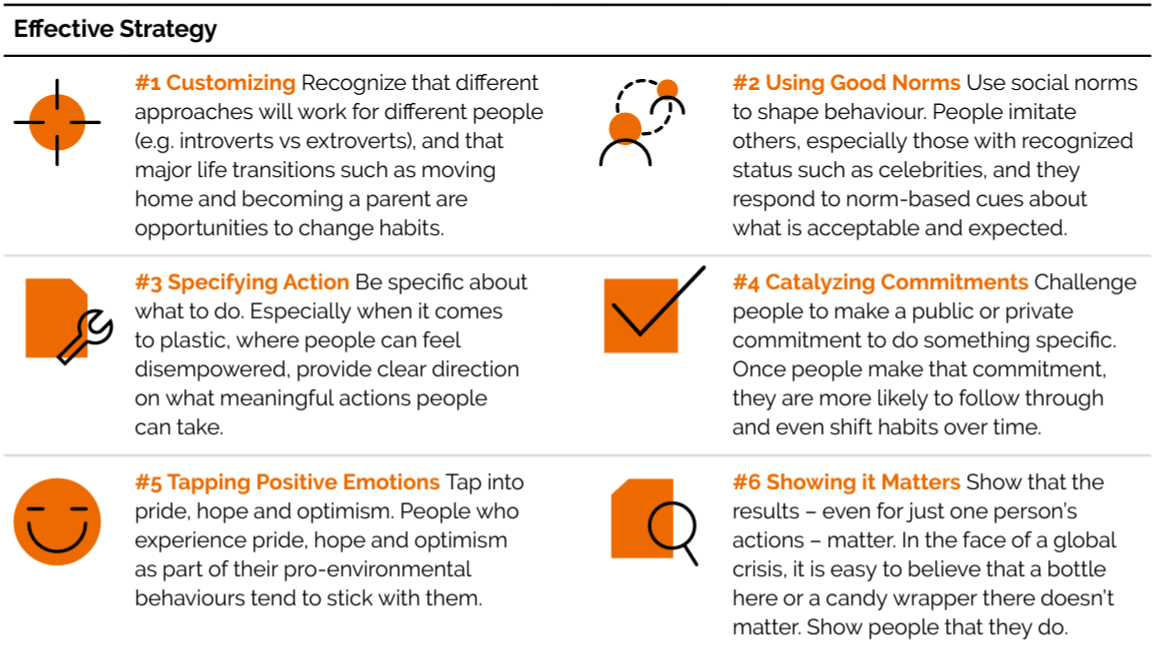
Click to view larger “Effective Strategy” infographic panel.
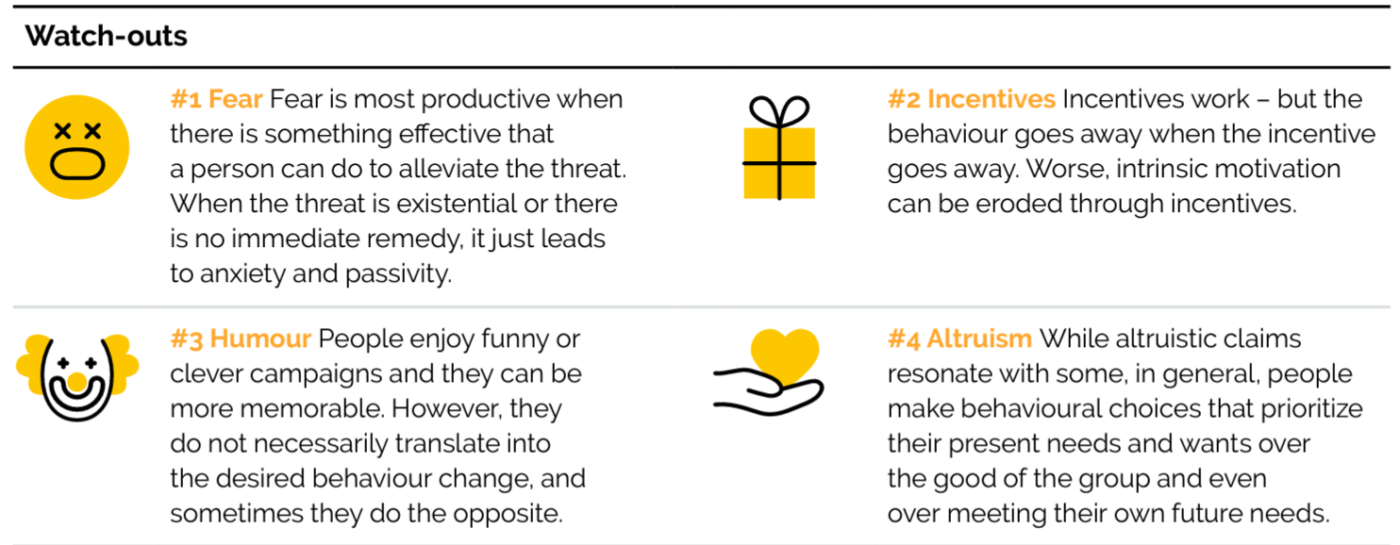
Click to view larger “Watch-Out” infographic panel.
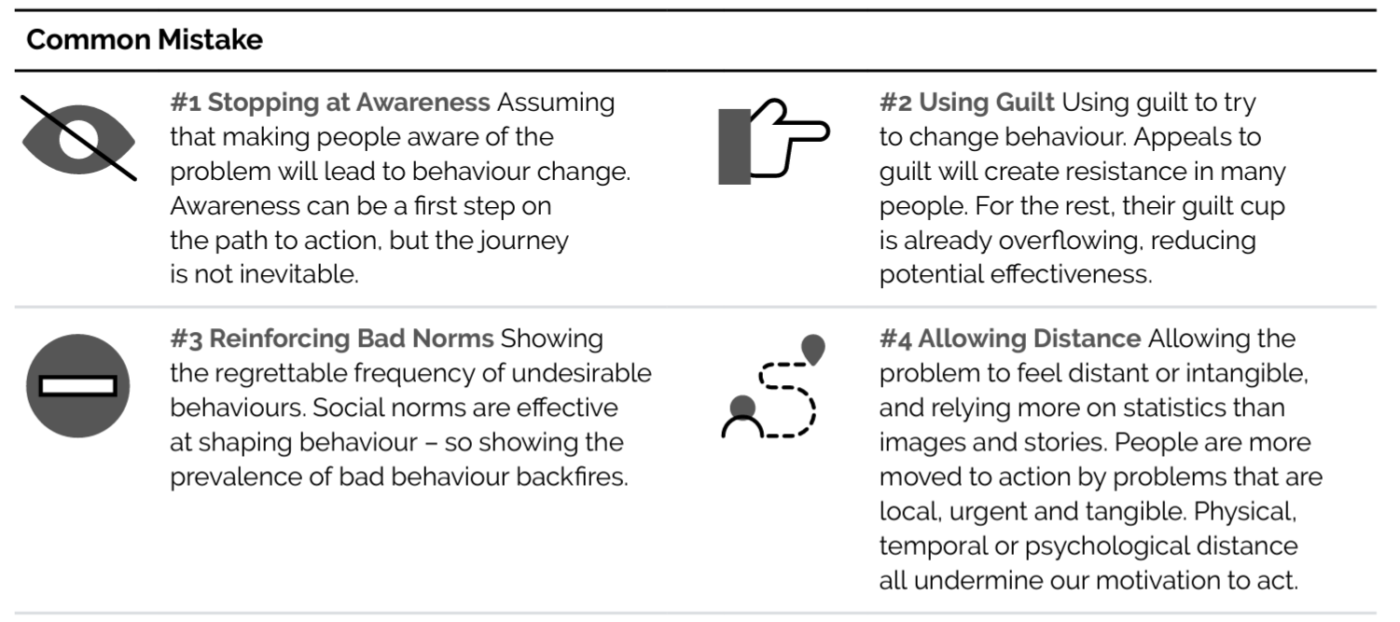
Click to view larger “Common Mistakes” infographic panel.
URLs / References
Stockholm Environment Institute (SEI) and the United Nations Environment Programme (UNEP), 2021 Reducing plastic pollution: campaigns that work. https://www.sei.org/wp-content/uploads/2021/02/210216-caldwell-sle-plastics-report-with-annex-210211.pdf
European Commission website https://ec.europa.eu/info/news/single-use-plastics-are-you-readytochange-2018-jun-05_en
The European Union (EU) project on Reducing Plastic Waste in Canada
